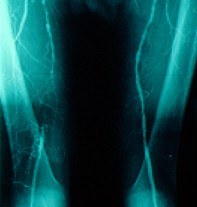Peer Reviewed
Feature Article Cardiovascular medicine
Intermittent claudication: an opportunity for secondary prevention
Abstract
Intermittent claudication is an important marker of increased cardiovascular risk. For most patients presenting with this symptom, management will be conservative but an aggressive approach to cardiovascular risk factors is essential.
Key Points
- Intermittent claudication is a characteristic symptom of arterial insufficiency that is generally caused by atherosclerosis.
- The degree of disability and progression or otherwise of symptoms determines how extensively the peripheral circulation should be investigated.
- Abdominal aortic aneurysms occur with increased frequency in patients with peripheral arterial disease.
- The ankle brachial index (ABI) is a useful objective indicator of peripheral arterial disease and an important marker of cardiovascular disease overall.
- If cardiovascular risk factors are not managed aggressively, the life expectancy of patients with intermittent claudication is reduced by 10 years, with 75% of deaths being due to a cardiovascular event.
- Secondary cardiovascular disease prevention measures will reduce deaths and disability from myocardial infarction and stroke and lessen the potential for limb threatening ischaemia.
Purchase the PDF version of this article
Already a subscriber? Login here.

